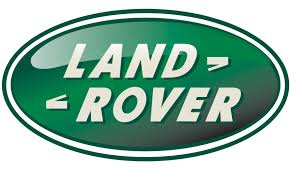L322 Range Rover System Description and Operation

STEERING
DESCRIPTION AND OPERATION
57-25
Simultaneously, the fluid pressure outlet to the pressurised axial grooves are restricted or partially restricted by the
closing return fluid control edges. The fluid displaced by the piston from the right power assist cylinder chamber, flows
through an external pipe to the radial grooves. From there the fluid passes to the associated axial grooves and on to
the return fluid control grooves, via the further opened return fluid control edges. The return flow of fluid to the reservoir
passes via interconnecting bores which lead to the return fluid chamber.
When the steering wheel is turned to the left the operating sequence is as above but the pressure is applied to the
opposite side of the piston.
Servotronic Operation
When the vehicle is manoeuvred into and out of a parking space (or other similar manoeuvre), the Servotronic function
of the BCU uses road speed data from the ABS ECU to determine the vehicle speed, which in this case will be slow
or stationary. The BCU microprocessor analyses the signals and outputs an appropriate control current to the
Servotronic transducer valve. The Servotronic valve closes and prevents fluid flowing from the feed fluid radial groove
to the reaction chamber. An orifice also ensures that there is return pressure in the reaction chamber. This condition
eliminates any 'reaction' ensuring that the steering is very light to operate, reducing the effort required to turn the
steering wheel.
As the vehicle is driven and the road speed increases, the BCU microprocessor analyses the road speed signals from
the ABS ECU and reduces the amount of control current supplied to the Servotronic valve. The Servotronic valve
reacts to the control current and opens the valve by an amount appropriate to the road speed. This allows a controlled
fluid supply from the feed fluid radial groove to the reaction chamber. The orifice prevents the loss of large amounts
of fluid to the return fluid chamber. The higher fluid pressure acting on the reaction piston causes compression of the
balls which are located between the reaction piston and the centering piece which in turn is securely connected to the
valve sleeve. When driving in a straight line, this has a positive effect on the exact centralising of the steering valve.
When the steering valve is actuated, the balls, with a higher load on them, provide additional torsional resistance to
rotation of the valve rotor. This mode of Servotronic assistance requires an established higher steering wheel torque
until the hydraulic assistance required in the left or right power assist cylinder is determined.
At high driving speeds, i.e. on a motorway, the Servotronic valve is fully open due to a very low or nonexistent control
current supplied from the BCU. This enables maximum pressure supply from the feed fluid radial groove to the
reaction piston. When the steering wheel is turned, the reaction pressure increases appropriate to the existing
operating pressure and pressurises the piston in the reaction chamber. As soon as the reaction pressure reaches its
upper limit, the fluid is discharged to the return fluid chamber via the cut-off valve and prevents further increases in
reaction pressure. This maintains the input torque applied through the steering wheel and provides the driver with an
improved 'road feel' allowing precise steering and directional stability.
Steering Lock ECU Operation
The steering lock ECU operates in conjunction with the immobilisation ECU and the ignition switch.
Detection of Unlock Request
When a 'valid' key is inserted in the ignition switch, the immobilisation ECU transmits a 'valid key in lock' message on
the K Bus. The steering lock ECU receives this message and starts the unlocking process of operating the steering
lock motor to disengage the locking bolt.
The immobilisation ECU goes into sleep mode 60 seconds after the vehicle is unlocked and a key is not inserted in
the ignition switch. When the key is subsequently inserted in the ignition switch and rotated, the rotation is sensed by
the Hall rotation sensor in the switch. Further rotation is prevented by the ignition switch lock solenoid actuator. The
rotation sensor transmits a signal which is received by the steering lock ECU. This ECU sends a 'request
immobilisation ECU status' message on the K bus which wakes the immobilisation ECU. When the immobilisation
ECU confirms that a valid key is inserted, the ignition switch lock disengages and the steering lock ECU starts the
unlocking process.
If the K bus is inoperative, the unlocking operation is initiated by the rotation sensor signal. This is indicated to the
driver through a delayed operation of the solenoid actuator preventing the key from being turned initially. The solenoid
actuator is operated on a delay which will initially prevent the key from being turned. The solenoid actuator will unlock
and allow the key to turn on the second attempt. A defect in the K bus is detected if no response from the
immobilisation ECU is received after a 2.4 seconds period after the 'request immobilisation ECU status' is sent.
